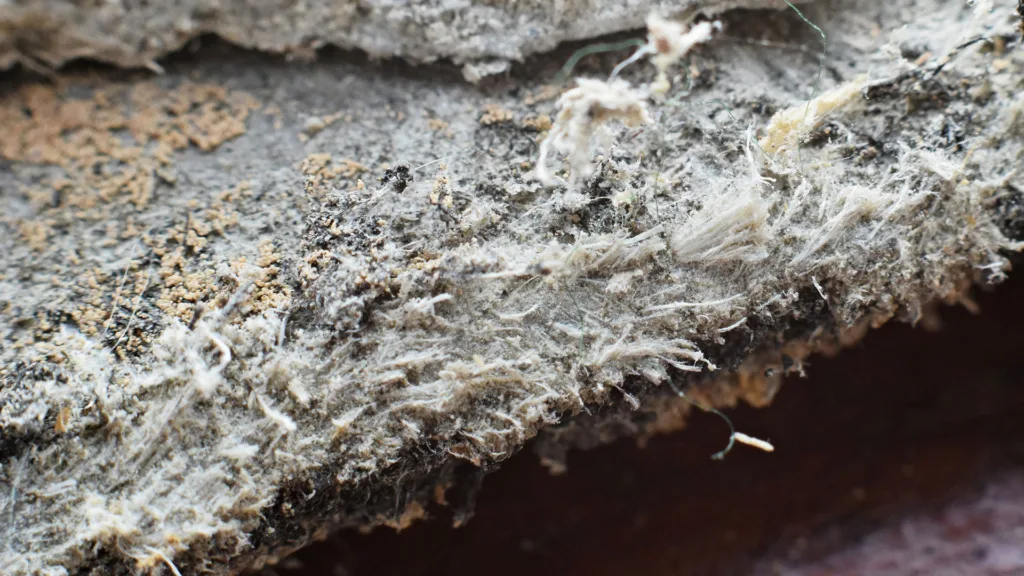Asbestos is a complicated mineral. It comprises many ions that come together to form needle-shaped fibers. The fibers are nearly impossible to see unless they are in a high concentration – they are incredibly strong, flexible, and do not burn. Because of these properties, asbestos was an extremely popular material and made its way into many industrial products, including
- Thermal insulation (pipe, block, etc.)
- Fireproofing materials
- Textile and cloth products
- Spackling
- Patching & taping compounds
- Gaskets and packing materials
- Cement pipe and sheet material
- Ceiling tiles
- Wallboard
- Siding and roofing materials
- Friction materials (brakes & clutches)
The dust created from the manufacture, installation, and eventual gradation of asbestos materials releases asbestos particles into the air. These fibers are then inhaled and lodge deeply into the lungs.
The Federal government finally placed a moratorium on the production of asbestos products in the early 1970s, but installation continued into the early 1980s. Even worse, asbestos cement pipes would be used into the late 1980s and early 1990s.
The first cases of asbestosis and asbestos-related lung cancer were diagnosed in 1935. Since then, it has been established that there is no safe level of exposure to asbestos fibers.
Thousands of workers and their families were exposed to the harmful effects of asbestos by irresponsible manufacturers that put a price on your life and were willing to gamble.
Because the same companies injure so many, it would seem that asbestos cases would be class action lawsuits. However, this is not the case.
Why isn’t your asbestos case a class action?
Class Action Lawsuit Defined
A class action (commonly known as a class-action lawsuit, class suit, or representative action) is a very specific type of lawsuit. It is a civil lawsuit brought on behalf of a group of plaintiffs (called a class, with each individual a class member) who have suffered a common injury due to the defendant’s conduct or negligence. Class action lawsuits have benefits; they allow the courts to manage a group of trials and achieve better results. Trying each individual case would be more difficult to schedule and attain compensation.
In the case of asbestos and mesothelioma cases, the federal courts made the decision not to allow class action classification. The court believed that mass litigation would compromise individual justice and not give each injured party adequate representation because each case is unique. Each person will have a different level of exposure, time frame, and product they’ve worked with, so no two cases are the same.
This is good news for you. Class action lawsuits tend to drag on for a long time and often, the compensation is divided amongst a large class, so the monetary recompense can be much less than anticipated. Additionally, class action lawsuits are run by a dedicated lead counsel that rarely deals with each individual.
What Next?
It can take up to 20 years to diagnose mesothelioma; once that diagnosis is in hand, you will need to act fast. Each minute will count and you need someone in your corner.
The company will attempt to place all the blame on you – YOU DID NOTHING WRONG. Your history of not wearing a mask or smoking is not why you have mesothelioma. The blame lies with the manufacturer that was well aware of the danger but didn’t take preventative measures to protect you.
Nothing causes mesothelioma except exposure to asbestos. Now is the time to hold them accountable.
We hope you never have to call us, but if you do, know you have a relentless team of fighters in front of you, protecting you from the storm and offering safe harbor.
Contact us for your free consultation – we’re here if you need us.



